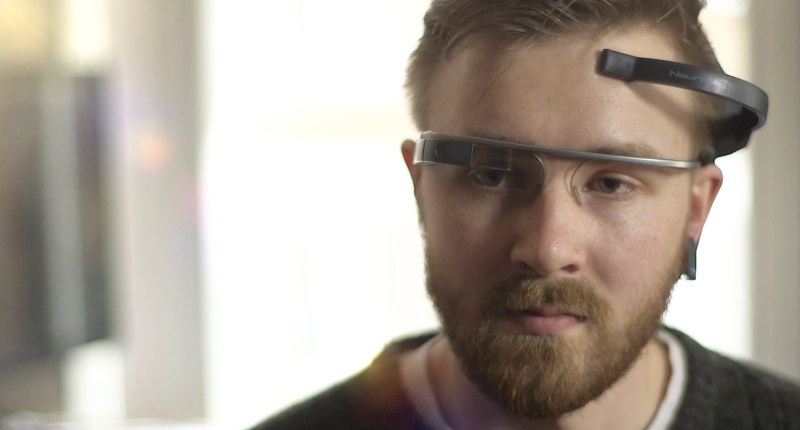WhatsApp’s 2025 update surge is in full motion and South Africa is once again at the front of the global test pool. With more…
I know what you’re thinking: Google Glass, now with mind control


Google Glass doesn’t exactly have a wonderful public image, nor the people who use it. The US$1 000 device has come under some scrutiny for its privacy pervasive nature in a post-Snowden world. But a new appendage may just change this perception, or involuntarily, make it worse.
NeuroSky, manufacturers of brainwave harnessing biosensors, had its MindWave Mobile fitted to Google Glass, allowing the wearer to control the Glass using nothing but brain function.
While the Glass fits around the ears, the MindWave is mounted on the forehead. No touch, motion or speech is needed at all, just thought.
The EEG and Glass are bridged via the MindRDR app, developed by London-based company This Place. Combining the three allows wearers to snap images with their minds (using Glass’s camera), and post them to Twitter or Facebook. The app itself is open source which is both exciting and starkly scary.
The positives do vastly outweigh the fear factor though. This Place notes some potential uses for the combined technology, including “enabling people with conditions like locked-in syndrome, severe multiple sclerosis or quadriplegia to interact with the wider world.” It would undoubtedly better the lives of millions if successful. Using brainwaves instead of verbal commands, MindRDR also allows those with speech impediments to fully enjoy Glass’s interactive potential.
MindRDR is available on GitHub, whereas NeuroSky’s MindWave Mobile will set users back around US$130.
We highly doubt that we’ll see the combined technology launched as a consumer product, nor are we likely to see anyone walking around with this contraption, but its value as a mind research tool and betterment device is obvious.

